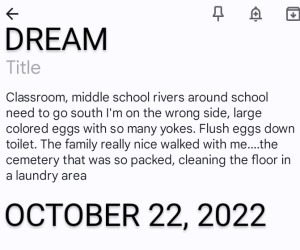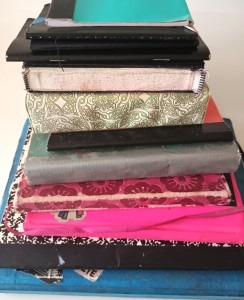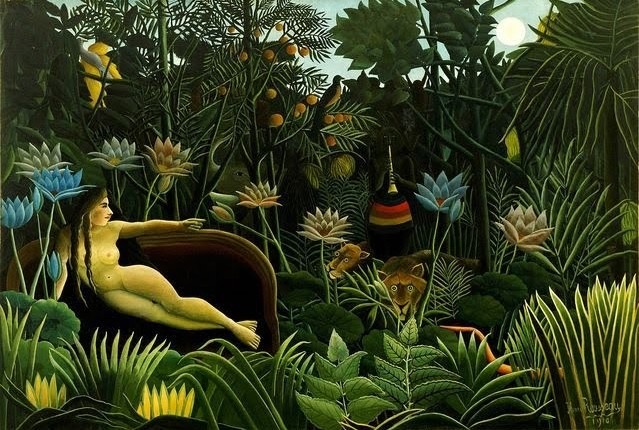
Be it night dreams or daydreams, I have always had an incredibly active dreamlife. I can’t remember a time I wasn’t having regular vivid sleep dreams and spending most of my waking hours in some alternative reality of my mind as much as possible.
I don’t think I started writing down my dreams until I went to college, but it’s something I’ve never stopped doing. I don’t have recurring dreams per se, but I do have different reappearing themes, like twins, doubles of things in general, architecture in various forms, chaotic movement, and travel, to name a few. I’ve been able to fly and breathe underwater in my dreams and have lucid-dreamt a few times. In a normal dreaming cycle, I also have a pattern of dreaming in three distinct vignettes.
Jung describes dreams as the vehicle our subconscious uses to communicate with us, and Marie-Louise von Franz describes them as “the voice of nature within us.” That’s how I relate to my dreams, as a portal to my subconscious, a way to strengthen my intuition and understand myself on a deeper level. Thinking about and writing my dreams down regularly also keeps my creative brain stimulated and active.
It’s such a big part of my life that when I have periods of not remembering my dreams, I feel misaligned and sad, like a close friend I’m used to seeing everyday has gone away. (Those periods usually correspond with feeling disconnected from myself somewhere in the real world as well.)
Getting a dream down on paper often feels like chasing an evaporating cloud, like in the movie The Eternal Sunshine of the Spotless Mind, where Joel’s memories are being visually erased as he desperately tries to hold on to them. So, when the details of a dream are disappearing faster than I can write, type, or record them, I try to capture any distinct imagery I can remember and the overarching feelings as quickly as possible. That can look like a jumbled mess on the page, but it still serves the purpose. And often with dreams that seem initially nonsensical, a discernable narrative emerges that is hard to recognize when not written down.
I keep various journals/notepads of different sizes, so I always have something to write in. I’ve tried keeping journals separated for different things like “just dreams”, sketching, normal journaling, concepts for artwork, etc. That never seems to work, and I still end up with everything scattered all over the place, not separated and completely defeating the purpose. I’ve used the “notes” app on my phone, but I’m never able to find that app except by accident.
My creative ideas in the waking world operate in the same way as my dreams. They also feel like evaporating clouds of something I’m chasing and trying to capture, but never quite getting to the heart of before it disappears. However, I find the more I stay in connection with myself, the closer I get. Actively engaging with my dreams helps me do that.
COVER IMAGE: Le Rêve (The Dream) by Henri Rousseau (1910)
Source: Museum of Modern Art/Public Domain




